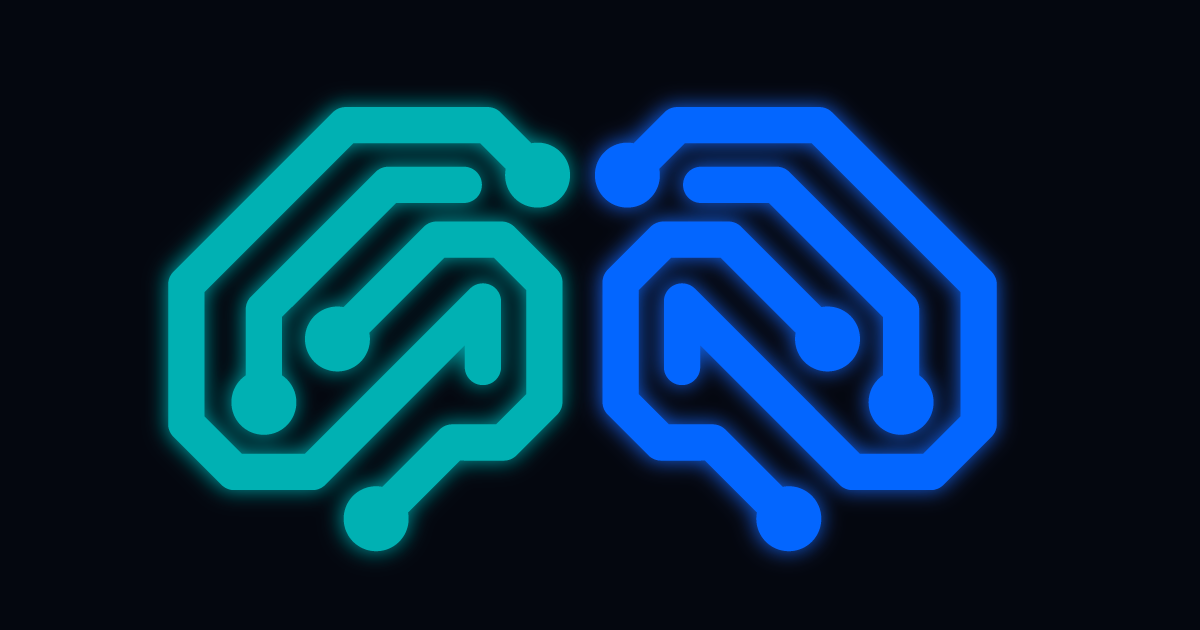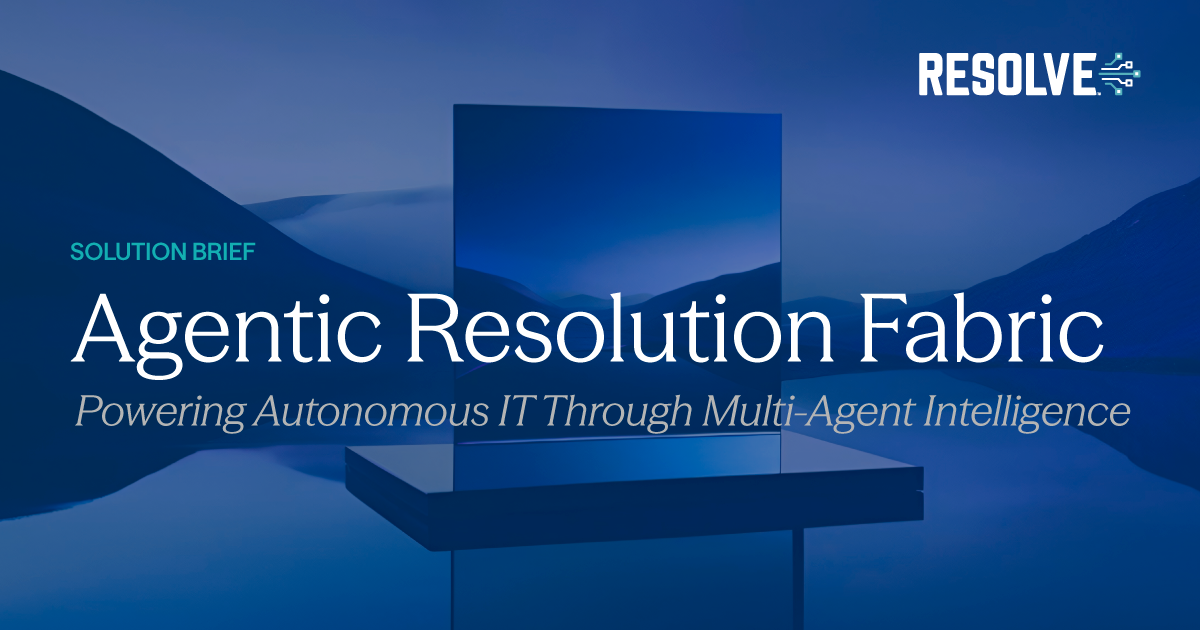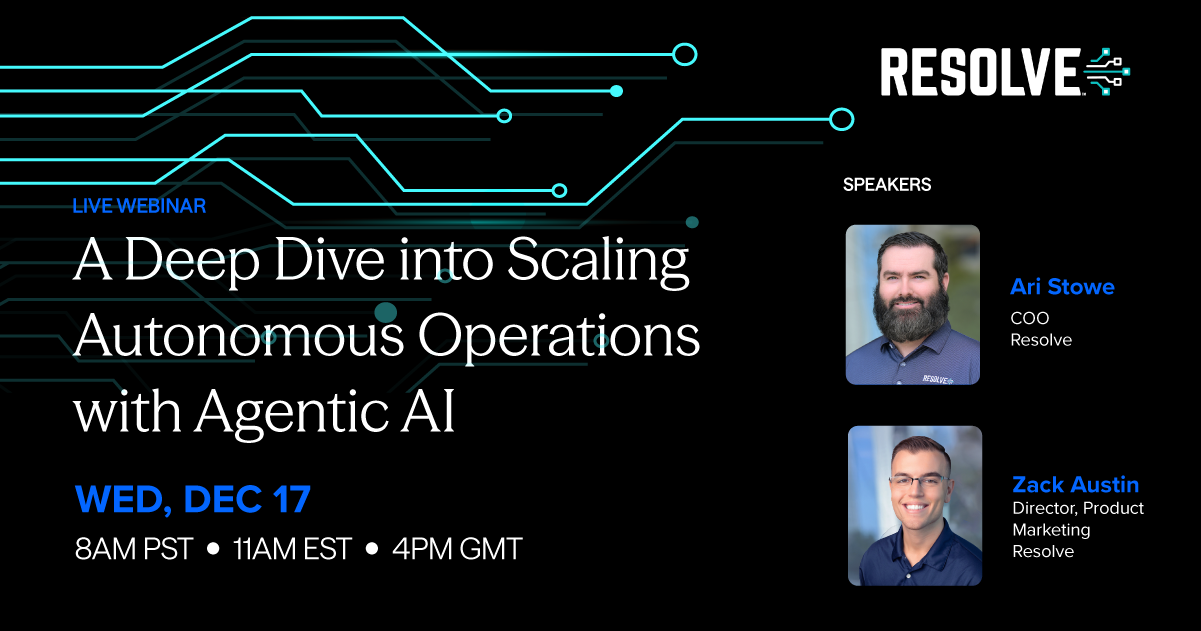
Choosing the Best End-to-End Process Automation Solution: A Strategic Playbook
Subscribe to receive the latest content and invites to your inbox.
Enterprise IT leaders are under growing pressure to streamline operations, reduce manual effort, and drive efficiency. End-to-end process automation solutions have emerged as a strategic priority, enabling businesses to connect disparate systems, remediate problems, and scale with agility.
However, navigating the crowded automation marketplace—and understanding what a true end-to-end solution looks like—can be daunting without the right guidance.
Today's discussion is designed to help you cut through the complexity! This guide breaks down what end-to-end automation solutions entail, outlines the critical capabilities to look out for, and offers practical advice on evaluating top vendors. Whether you're modernizing legacy workflows or planning a full-scale digital transformation, this playbook gives you the clarity and confidence to choose the right solution for your organization!
What Makes a Solution Truly End-to-End?
Understanding end-to-end automation can feel overwhelming at first, but it's critical to grasp its full potential if you want to unlock real value for your organization. A truly end-to-end process automation solution goes beyond task-level efficiency to continuously solve larger business challenges, connecting systems, data, and teams across the enterprise.
By identifying what makes a solution truly end-to-end, IT leaders can ensure they're investing in technology that drives meaningful transformation.
Here are a few of the elements that end-to-end automation solutions include:
- Workflow orchestration tools that coordinate complex, multi-step processes across departments.
- Integration platforms that connect enterprise systems like ERPs, CRMs, and HR software.
- Robotic process automation (RPA) bots that handle repetitive, rule-based tasks across applications.
- AI and machine learning components that enable intelligent decision-making and exception handling.
- Monitoring and analytics dashboards that provide visibility into process performance and bottlenecks.
As you can see, these tools help enterprises proactively reduce manual work, improve accuracy, and accelerate digital transformation. These next few elements take that enterprise efficiency even higher:
- Business process modeling utilities that allow teams to design, visualize, and optimize workflows.
- Role-based access controls and governance features that ensure compliance, security, and audit readiness at scale.
- Scalable architecture and deployment options (cloud, on-prem, or hybrid), to align with enterprise IT strategies and infrastructure.
Together, these components form the foundation of a robust end-to-end process automation solution—one that's capable of streamlining operations, integrating core systems, and adapting to the complex needs of the enterprise.
By understanding what these solutions entail, IT leaders are better equipped to evaluate whether a platform can truly support long-term automation goals. But knowing what a solution is only goes so far; the next step is understanding what it can do. Let's look at how end-to-end process automation delivers value across the business and the key outcomes to watch for.
How End-to-End Process Automation Solutions Deliver Business Value
Implementing end-to-end process automation isn't just about modernizing workflows—it's about unlocking measurable business value across the enterprise. When thoughtfully deployed, these solutions go beyond efficiency gains to impact strategic goals like scalability, agility, and customer experience. The real power lies in how these tools come together to streamline operations and drive smarter decision-making.
Whether it's reducing operational costs, minimizing errors, or accelerating service delivery, end-to-end automation helps businesses operate with greater precision and speed. For IT leaders, it creates a foundation for sustainable innovation by freeing up resources and enabling cross-functional alignment.
Here's what to look for when measuring the impact of a successful end-to-end process automation solution:
- Significant reduction in end-to-end process cycle times, as automation removes manual handoffs and accelerates workflow execution across integrated systems, from initial input to final output.
- Measurable decreases in operational costs, achieved by automating repetitive tasks, optimizing resource allocation, and reducing the need for custom point solutions or workarounds.
- Enhanced data accuracy and regulatory compliance, thanks to built-in validation rules, audit trails, and role-based governance embedded directly within the automation framework.
- Improved customer and employee experience, enabled by faster, more consistent service delivery and seamless cross-channel interactions powered by unified, automated workflows.
- Greater scalability and business agility, allowing enterprises to rapidly adapt workflows, onboard new systems, or respond to market shifts without extensive redevelopment or IT overhead.
These benefits aren't just theoretical; they're being realized by organizations across industries that have embraced true end-to-end process automation solutions. From streamlining complex operations to enhancing customer-facing services, the impact is both broad and deep.
Now we're going to get into some examples that highlight how forward-thinking enterprises are putting end-to-end process automation solutions into practice—and the real-world outcomes they're achieving!
End-to-End Process Automation Solutions in Action
So, what happens when organizations implement end-to-end process automation solutions? Let's begin by taking a look at two businesses that partnered with a leading solution provider:
Example 1: Major Telecommunications Provider
A leading telecommunications company in South Africa partnered with a top-tier end-to-end process automation solution provider to modernize its network operations. By automating routine maintenance workflows, incident response tasks, and customer communication processes, the organization was able to:
- Save over 100,000 staff hours in under a year, redirecting valuable human resources toward higher-impact initiatives.
- Achieve a 15% revenue increase in a single quarter, driven by operational efficiencies and improved service responsiveness.
This approach to automation not only reduced manual workload but also delivered measurable ROI and positioned the company for sustainable growth.
Example 2: Global Communications Infrastructure Provider
An international communications infrastructure provider implemented an end-to-end process automation solution to transform its IT service operations. Through intelligent alarm enrichment, real-time system visibility, and automated customer notifications, the company experienced:
- Faster, more informed incident response, thanks to alarms enriched with relevant customer and infrastructure data.
- A single-pane-of-glass view into circuit and port status, enabling technicians to troubleshoot more efficiently.
- Improved customer satisfaction, with proactive outage notifications and expanded self-service options.
By consolidating tools and automating repetitive workflows, the organization reduced technician time per ticket and significantly lowered both mean time to identification (MTTI) and mean time to resolution (MTTR).
Summing Up End-to-End Process Automation Solutions
These real-world wins make one thing clear: end-to-end process automation isn't just a nicety; it's a necessity. When done right, it frees up thousands of hours, accelerates service delivery, cuts costs, and delivers the kind of agility enterprises need to stay competitive.
Beyond efficiency, companies gain sharper visibility, stronger compliance, and the ability to scale without breaking their systems—or their teams. However, not all solutions are created equal. So how do you separate the leaders from the noise?
Up next: what to look for in a provider that's built to deliver real enterprise impact.
How to Invest in the Right End-to-End Process Automation Solution
Right now, operational complexity is increasing while expectations for speed, accuracy, and agility are higher than ever. That's why investing in a true end-to-end process automation solution is no longer a nice-to-have—it's a critical move for future-ready organizations. These solutions don't ‘just' improve workflows or remediate incidents; they fundamentally transform how businesses operate.
The value here is clear: fewer manual tasks, faster cycle times, greater visibility, stronger compliance, and the ability to scale without overloading teams or infrastructure. But choosing the right provider is essential to realizing these benefits. And with so many options on the market, how can you tell which end-to-end process automation solution is built for enterprise success?
Here's what to look for in a leading provider:
- Comprehensive integration capabilities that connect with your existing enterprise systems (ERPs, CRMs, ITSMs, etc.) out of the box.
- Unified orchestration of people, processes, and technology, not just siloed task automation or point solutions.
- Scalable architecture that supports cloud, on-prem, and hybrid environments so that your strategy evolves with your infrastructure.
- Embedded intelligence, including AI/ML for decision support, anomaly detection, and predictive automation.
- Enterprise-grade governance and security features, with role-based access, audit trails, and regulatory compliance baked in.
- Proven outcomes with documented success stories across industries—demonstrating real, measurable business value.
Choosing a best-in-class end-to-end process automation solution is more than a technical decision—it's a strategic investment in your organization's agility, resilience, and long-term success.
You've seen what these solutions can do. Now it's time to choose the partner who can take you there!
Get in touch with an end-to-end process automation solution expert today!






